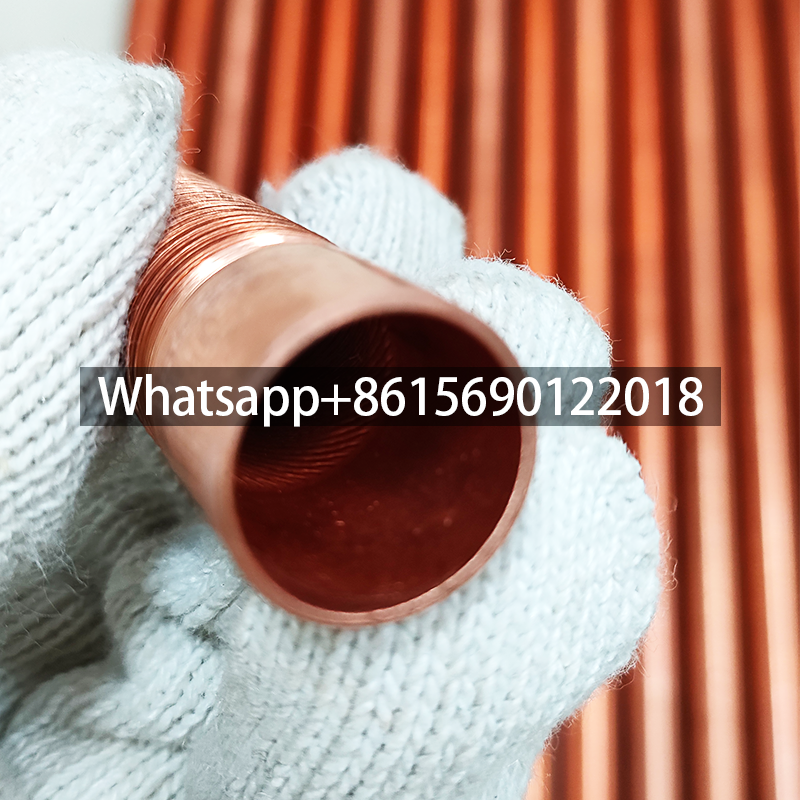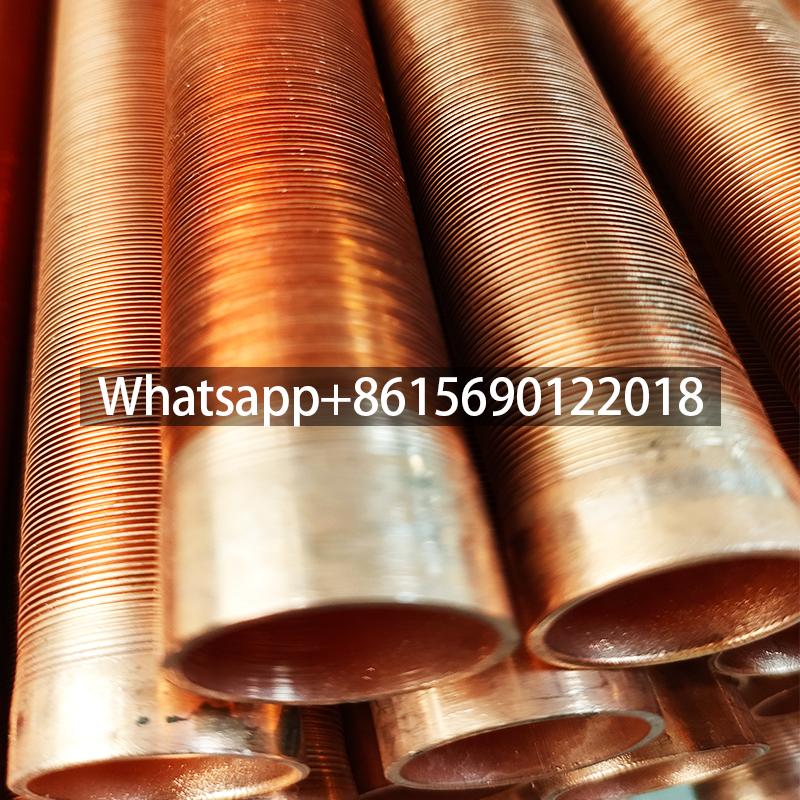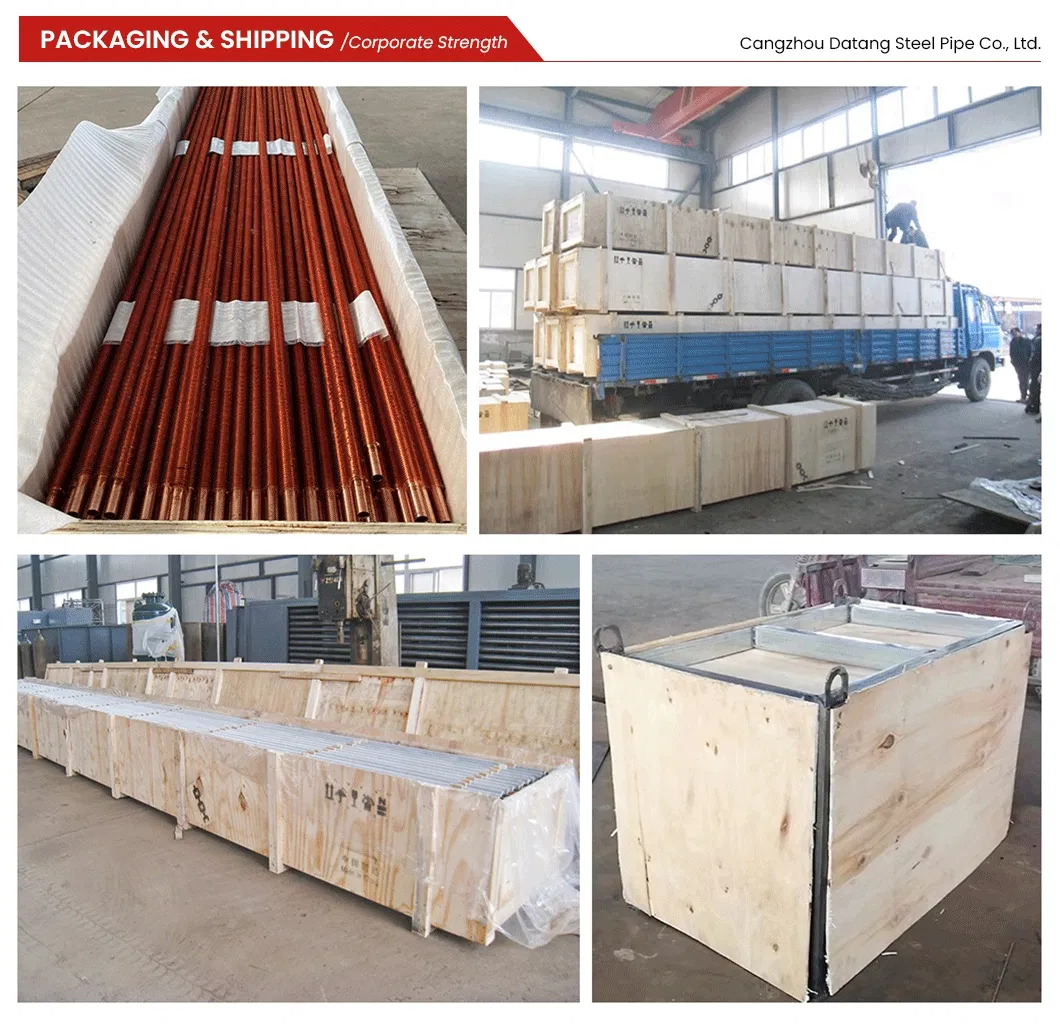TP2 Copper Internally Threaded Tube Low Finned Tube
Tp2 Copper Internally Threaded Tube Low Finned Tube is primarily used in condensers and evaporators in air conditioning and refrigeration equipment, absorption refrigerators, oil coolers, and various other heat exchangers. It is also used in condensers and evaporators in heat exchangers in thermal and nuclear power plants, and in marine heat exchangers. It is also used in gas turbine units and various heat exchangers in air coolers, diesel coolers, aftercoolers, and waste heat recovery systems in the petrochemical industry. It is also used in dryers and heaters in the chemical industry.

The key difference between internally threaded copper tube and ordinary copper tube lies in the internal wall structure design. The former uses threads to enhance heat transfer efficiency, while the latter has a smooth internal wall.
Structural Differences
1. Internal Wall Morphology
Internally threaded copper tube: The internal surface features a helical thread structure (tooth height 0.10-0.25mm) and a smooth external surface. This increases contact area and turbulence, improving heat transfer efficiency.
Ordinary copper tube (plain tube): Both inner and outer surfaces are smooth, lacking turbulence-inducing design.
2. Materials and Specifications.
Both are primarily made of TP2 phosphorus-deoxidized copper, but the internally threaded copper tube has a smaller outer diameter (5-12.7mm) and thinner wall thickness (0.20-0.30mm), making it suitable for high-efficiency cooling systems.

Performance Comparison
Heat Transfer Efficiency: The internal surface area per unit length of the internally threaded copper tube is 1.5-2 times that of the plain tube, resulting in a heat transfer coefficient 1.5-2.4 times higher, improving thermal conductivity by 20%-40%.
Energy Savings: By optimizing fluid turbulence, reducing pressure drop and energy consumption, system energy efficiency can be improved by 20%-35%.
Differentiation of Application Scenarios
Internally Threaded Copper Tube: Primarily used in heat exchange components such as evaporators and condensers in air conditioning and refrigeration equipment. Suitable for high-pressure refrigerant systems like R410A, its market share continues to expand as energy efficiency standards rise.
Ordinary Copper Tube: Mostly used for basic refrigeration piping connections or in traditional systems with low energy efficiency requirements.

Datang Fin Tube Technical Parameters
| PRODUCT | TYPE | TUBE MATERIAL | FIN MATERIAL | TUBE SIZE | FIN SIZE |
| Heat Exchanger Finned Tube | Extruded Fin Tube | All Kind of Material can be applied | Aluminum A1100 | 15.88~50.8 | 7~11.5FPI |
| Fin Height Max 16mmH | |||||
| L-Foot Fin Tube | All Kind of Material can be applied | Copper C1100, C1220 | 12.70~50.8 | 7~11.5FPI | |
| (Wrap On Type) | Fin Height Max 16mmH | ||||
| G-Fin Tube (Embedded Type) | Aluminum A1100, A1050, A1060 | ||||
| High Frequency Welded Finned Tube | A179 Carbon Steel Tube | Carbon Steel Tube | 12.70~160 | 1.5~7FPI | |
| Stainless Steel Tube | Stainless Steel Tube | 0.8~3.2mm. Thickness | |||
| Alloy Steel Material | Alloy Steel Material | ||||
| Integral Copper & Copper Alloy High Finned Tube | C12200, C11000, C70600 | C12200, C11000, C70600 | 15.88~22.23 | 5~9FPI | |
| Max 12mm. H | |||||
| Oval Finned Tube | Carbon Steel Tube | Carbon Steel Tube | All Size Available | 5~15FPI | |
| Stainless Steel Tube | Stainless Steel Tube | ||||
| Alloy Steel Material | Alloy Steel Material | ||||
| Copper & Copper Alloy Tube | Copper & Copper Alloy Tube | ||||
| Monometallic Fin Tube | Low Fin Tube | Carbon Steel, stainless steel, titanium, copper, brass, nickel alloy, etc. | — | 9.52~40 | 12, 16, 19 28 FPI, etc. |
| Turbo-C Tube | |||||
| Turbo-E Tube | |||||
| Corrugated Tube | All Kind of Material | — | 6.35~40 | 2~9FPI |
